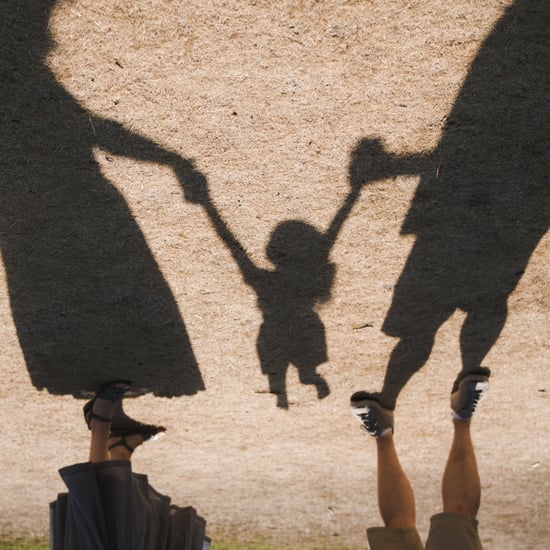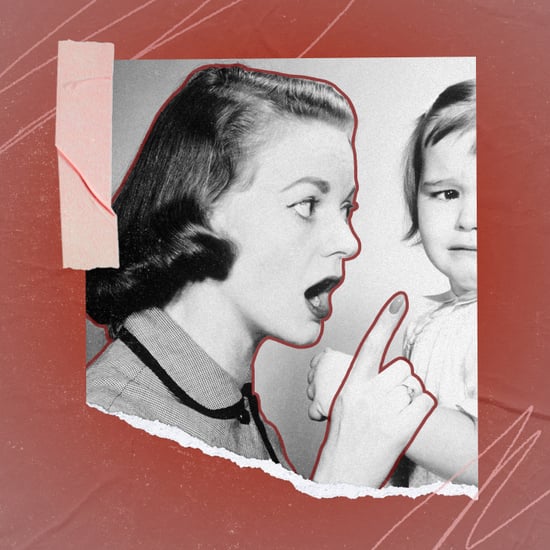How to Talk to Kids about Racism and Sexism in Politics
How to Talk to Your Kids About Racism and Sexism in Politics, According to Experts

After a host of heated presidential debates characterized by insults, name-calling, and constant interrupting, now seems like the prime time to teach kids how to identify good and bad behaviour, and more specifically, racism and sexism, especially in politics. This means having important conversations to help children identify inappropriate conduct when it happens, and modelling the appropriate behaviour yourself.
However, learning how to explain complex concepts like racism and sexism in a way kids can understand is sometimes confusing, and it can be difficult to know where and when to start. To make this work a little easier, POPSUGAR spoke to child psychologists and found out what parents can do to teach their kids about all different kinds of prejudice in politics and why these lessons are so influential for the next generation.
How Can You Help Your Kids Understand Racism and Sexism?
To teach kids how to identify and respond to racism and sexism, Abigail Gewirtz, Ph.D., a child psychologist, professor of family social science and developmental psychology at the University of Minnesota, and mother of four, says simple discussions pointing out any problematic rhetoric can really help children process these more complicated topics. "Make sure in your conversations that you respond not only to the issues, but to the emotions they bring up," Dr. Gewirtz advises. "For example, if you are talking about how girls or women are sometimes subject to slurs never aimed at boys or men, you might want to first acknowledge the feelings this brings up."
To do this, Dr. Gewirtz recommends using phrases like, "I can see on your face that talking about this makes you feel worried — or maybe sad or mad?" or just asking your child how they feel after seeing racist or sexist behaviour. From here, she says it's important to validate your child's feelings. Language like, "I would feel mad, and also sad, if somebody talked to me like that," can be especially helpful, and will allow kids to understand that their feelings matter.
Ultimately, however, children will look to their parents for guidance, so Dr. Gewirtz reminds parents that kids are always watching, and that seeing how their parents react to racist and sexist language is really how they will start to understand it themselves. Consequently, Anandhi Narasimhan, M.D., a double-board-certified child, adolescent, and adult psychiatrist, says that if parents want to teach their kids how to understand racism and sexism in politics, they need to check their own beliefs first. "Parents need to do their own self-reflection about their biases and look around at their own behaviour," Dr. Narasimhan says. She recommends the book Race Talk by Derald Wing Sue as a great resource to help guide parents through this process. Parents can also read books like these to their kids to start teaching them about racism and sexism.
When Should You Start Talking About Racism and Sexism With Kids?
According to Shivani Chopra, M.D., a triple board-certified child, adolescent, adult, and forensic psychiatrist in Southern California, kids as young as one can start distinguishing between male and female faces, and at age three, kids start building stereotypes. For instance, Dr. Chopra recalls how her own 3-year-old once said that only his boy friend could carve pumpkins with him, not the girl who was also present. "For him actually, it wasn't really about gender," Dr. Chopra explains, as it turned out her son only said this because he felt the girl was too young to play with him. "But that was a great teaching point for me to talk to him and say, 'Well, you know, boys and girls should play together,' and 'If boys can do something, girls can do something.'"
Dr. Narasimhan agrees, saying that you can start to talk about racism and sexism early on by framing it as an issue of respect. "Kids begin to pick up on biases and internalize them beginning even at a very young age. So it is important to challenge misconceptions so they don't become part of a child's frame of mind," she says. Another good strategy is allowing your child to ask questions . . . even the awkward ones. "Don't reprimand [children] for noticing racial differences and pointing them out," Dr. Narasimhan says. "If you don't allow them to talk, then they aren't able to work through processing their thoughts."
She suggests responding to basic questions about race with basic responses like "Yes, some people have darker skin, some have lighter skin" and establishing that although people may look different, on the inside we're all the same. Although young kids may not be able to understand more complex ideas about racism and sexism right away, Dr. Narasimhan says the first step is teaching them how to treat people fairly and what that looks like.
Why is it Important to Talk About Racism and Sexism in Politics?
As Dr. Chopra explains, the world of politics is often associated with power and strength, and the leaders that make all the big decisions for the country. "When you look at our leaders, you want things to be well-rounded," Dr. Chopra says. "So if you associate that with being a man or you associate that with being white, those are going to naturally conform to your stereotypes."
This is why teaching kids how to identify racism and sexism is so important, because without this knowledge, working towards more diverse leadership can become much harder. "If you start teaching kids from a young age that anything is possible and leaders can come in all sorts of shapes, sizes, colours, you completely change the dynamic of how they view politics and how they view leadership," Dr. Chopra says. "I mean, they're our future. So if you can start [teaching them] young, hopefully when they become our leaders, they'll be more open-minded and accepting."






